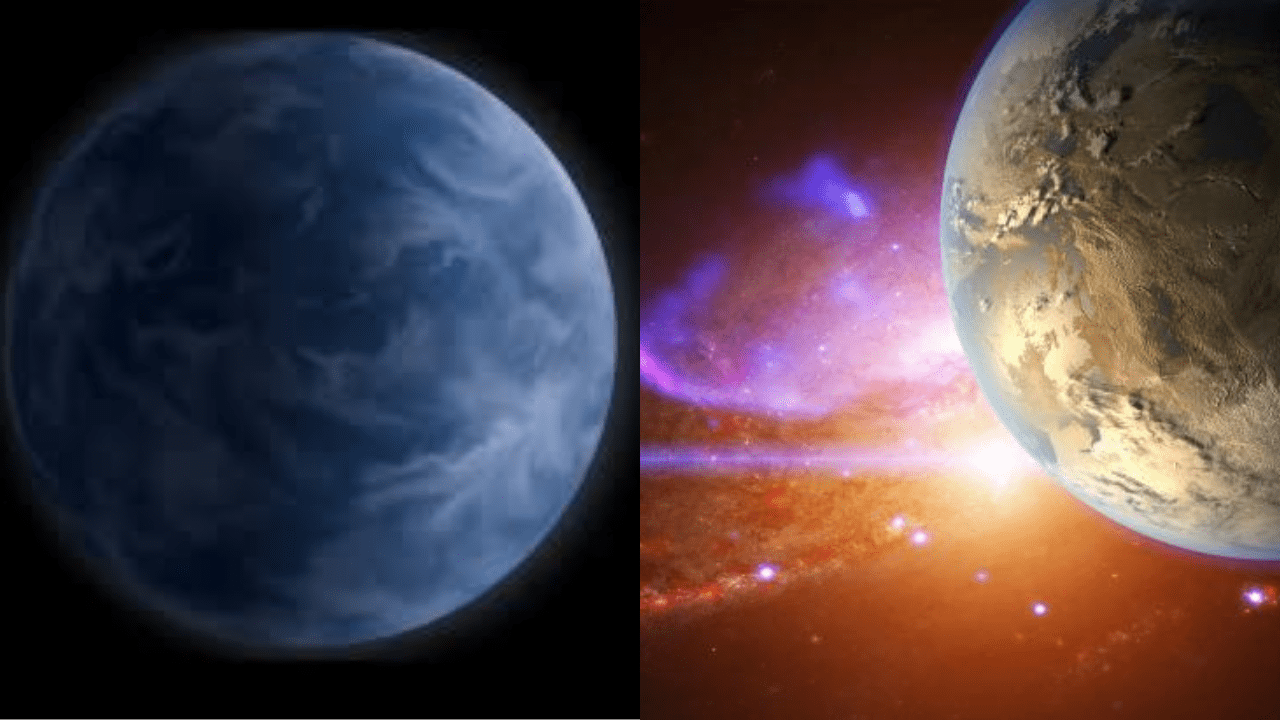A Planet Bigger Than The Earth Found With Possible Signs of Life!
Finding life beyond Earth is one of the major challenges of scientists and astronomers. Recently, NASA’s James Webb Space Telescope made a jaw-dropping discovery. They discovered the exoplanet K2-18 b. A planet bigger than our Earth, and with conditions to support life! The results are published on The Astrophysical Journal Letters and NASA. In 2015, scientists first spotted K2-18 b during NASA’s K2 mission. The planet is around 120 light-years away from Earth. However, the James Webb Space Telescope has allowed astronomers to get a better look at this planet. What the astronomers found is nothing short of amazing. Let’s dive in to know more about the possible life signs on the planet. The Incredible K2-18 b The surprising exoplanet K2-18 b is 8.6 times…
Finding life beyond Earth is one of the major challenges of scientists and astronomers. Recently, NASA’s James Webb Space Telescope made a jaw-dropping discovery. They discovered the exoplanet K2-18 b. A planet bigger than our Earth, and with conditions to support life! The results are published on The Astrophysical Journal Letters and NASA.
In 2015, scientists first spotted K2-18 b during NASA’s K2 mission. The planet is around 120 light-years away from Earth. However, the James Webb Space Telescope has allowed astronomers to get a better look at this planet. What the astronomers found is nothing short of amazing. Let’s dive in to know more about the possible life signs on the planet.
The Incredible K2-18 b
The surprising exoplanet K2-18 b is 8.6 times bigger than Earth! Scientists call it a “Hycean” world because it has an atmosphere rich in hydrogen and a surface covered in vast oceans. But that’s not all. The James Webb Telescope discovered something even more intriguing. They found tiny bits of stuff called carbon-bearing molecules like methane and carbon dioxide in the planet’s air.
This discovery is remarkable because of the abundance in methane and carbon dioxide along with the lack of ammonia, could mean there’s a watery ocean hiding beneath K2-18 b! NASA researchers believe that this mix of conditions could be just right for life to thrive there!
“Our findings underscore the importance of considering diverse habitable environments in the search for life elsewhere,” says the astronomer at the University of Cambridge and lead author of the paper, Nikku Madhusudhan.
A Sweet Spot for Life
K2-18 b orbits its star, K2-18, in an area called the “habitable zone.” This cosmic zone is not too hot and not too cold. It’s just right for liquid water to exist on the surface of a rocky planet. As there’s water, there could also be clouds and rain, which are vital for life.
An Unusual World
K2-18 b is a bit of a cosmic mystery. It’s bigger than Earth but smaller than Neptune. The exoplanet doesn’t fit neatly into any category we know in our solar system! Scientists are still trying to figure out exactly what this planet’s atmosphere is like.
“Although this kind of planet does not exist in our solar system, sub-Neptunes are the most common type of planet known so far in the galaxy. We have obtained the most detailed spectrum of a habitable-zone sub-Neptune to date, and this allowed us to work out the molecules that exist in its atmosphere,” says Subhajit Sarkar of Cardiff University.

A New Perspective
When looking for life on other planets, astronomers usually focus on smaller rocky planets. But K2-18 b is different. It has got some scientists rethinking their strategy. Nikku Madhusudhan, an astronomer from the University of Cambridge, thinks that Hycean worlds like K2-18 b might be perfect spots to search for alien life.
Cracking the Cosmic Code
The scientists studied the light from K2-18 b’s parent star as it passed through the planet’s atmosphere. This tiny bit of starlight holds important clues that telescopes like the James Webb Space Telescope can use to learn about the planet’s atmosphere.
Adding to the surprise, they also found the molecule “dimethyl sulfide (DMS).” On Earth, this molecule is produced as a result of living things! But, scientists are being careful and want to do more tests.
A Step Closer to Home
Most planets in our universe have harsh conditions and don’t seem to support life. That’s what makes K2-18 b such a big deal. It’s a step in the right direction because it’s more like Earth with moderate temperatures and a chance of liquid water.
The Journey Continues
We still have a lot to learn about K2-18 b. Its massive size and the uncertainty about what’s going on inside it make things tricky. It could be a planet with lots of ice, or maybe it’s more like Neptune, full of gas and liquid.
“Our work here is but an early demonstration of what Webb can observe in habitable-zone exoplanets,” says Savvas Constantinou, an astrophysicist.
Conclusion
K2-18 b is a a huge planet in a sweet spot for life with hints that it might be a good place for living things. It’s a reminder of how big and exciting our universe is and how much we still have to learn. They discovered the exoplanet K2-18 b. A planet bigger than our Earth, and with conditions to support life! The results are published on The Astrophysical Journal Letters and NASA.
In 2015, scientists first spotted K2-18 b during NASA’s K2 mission. The planet is around 120 light-years away from Earth.
Also read,






